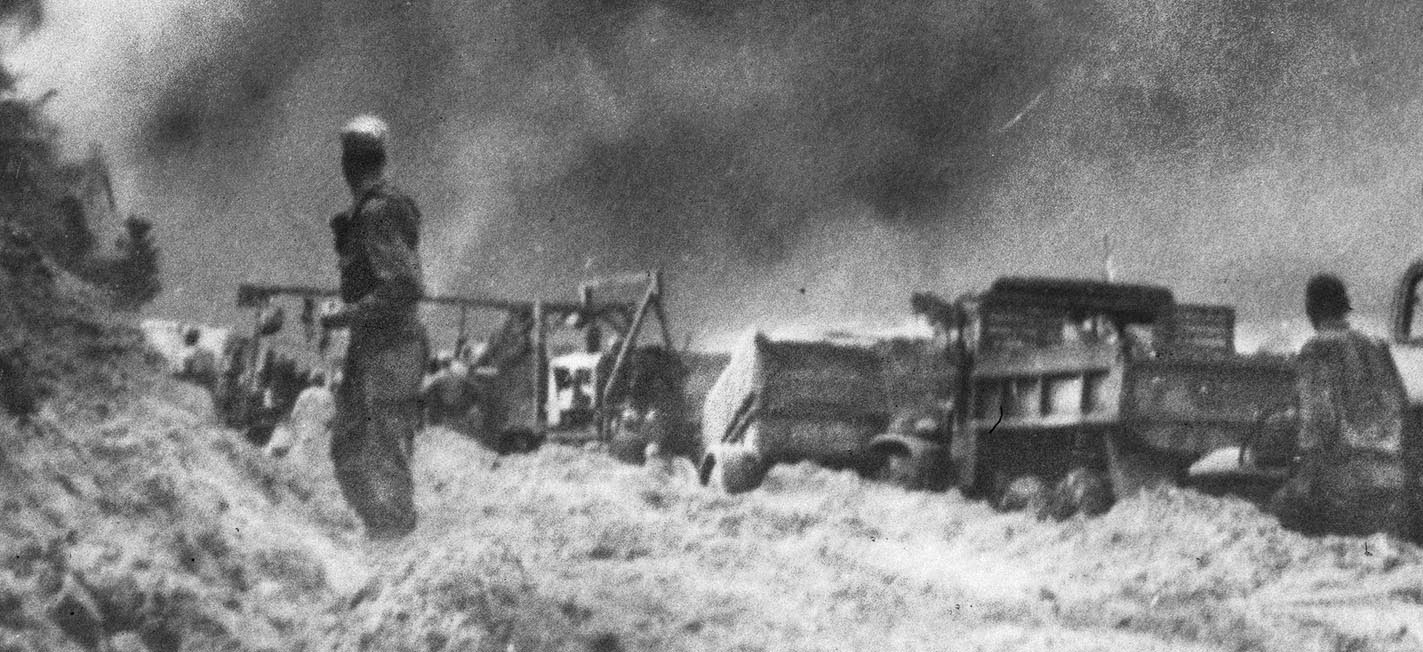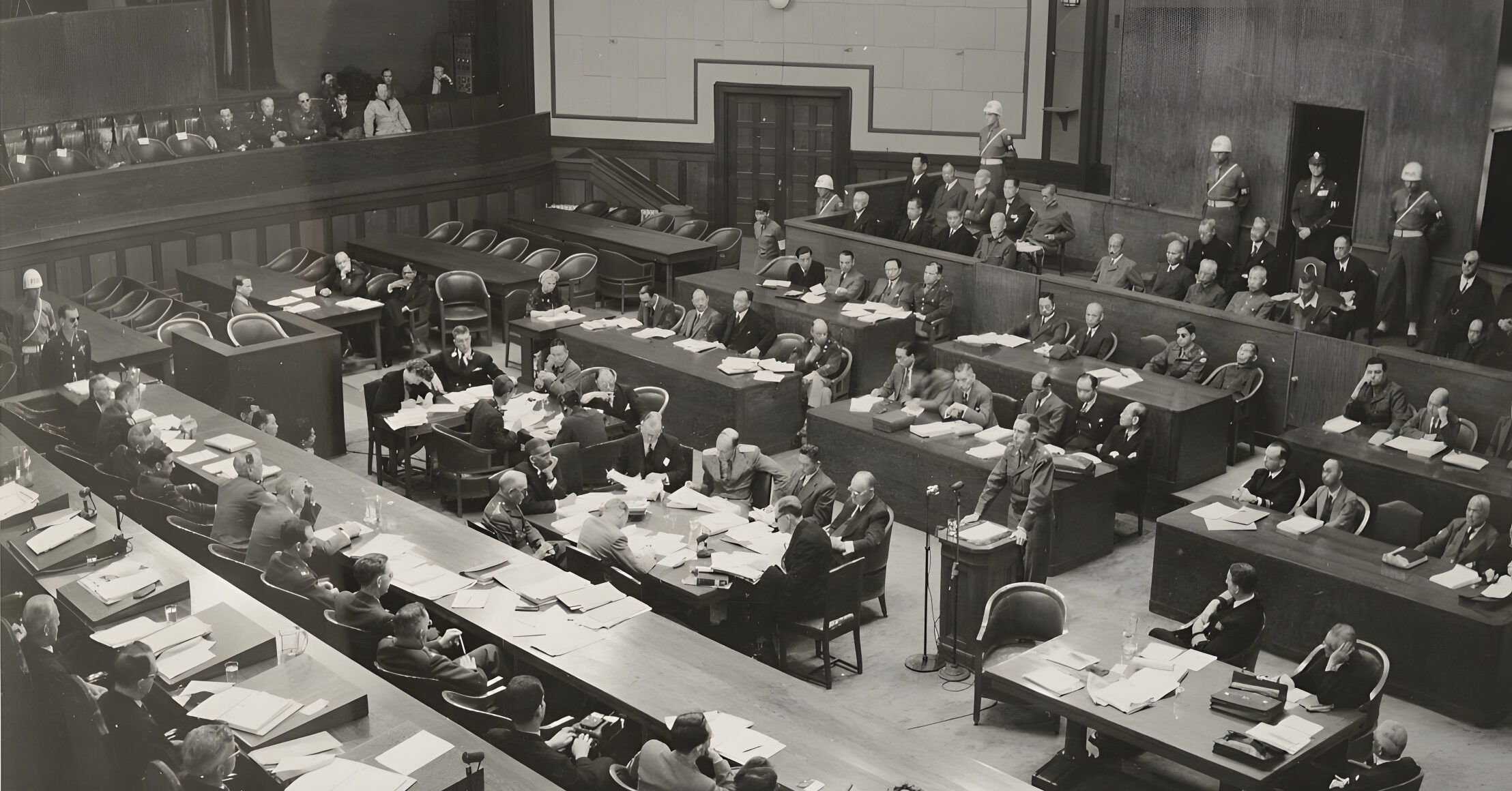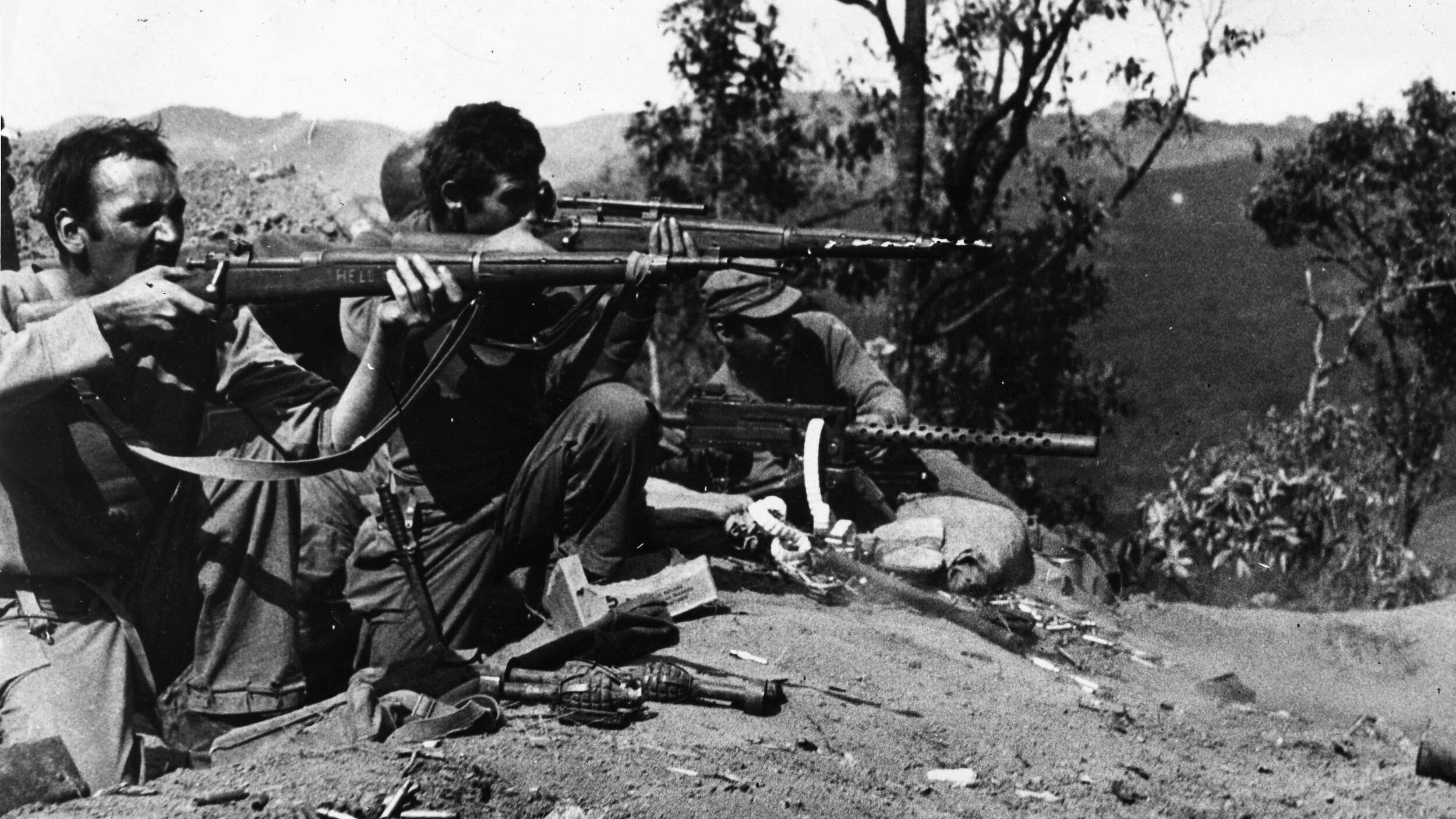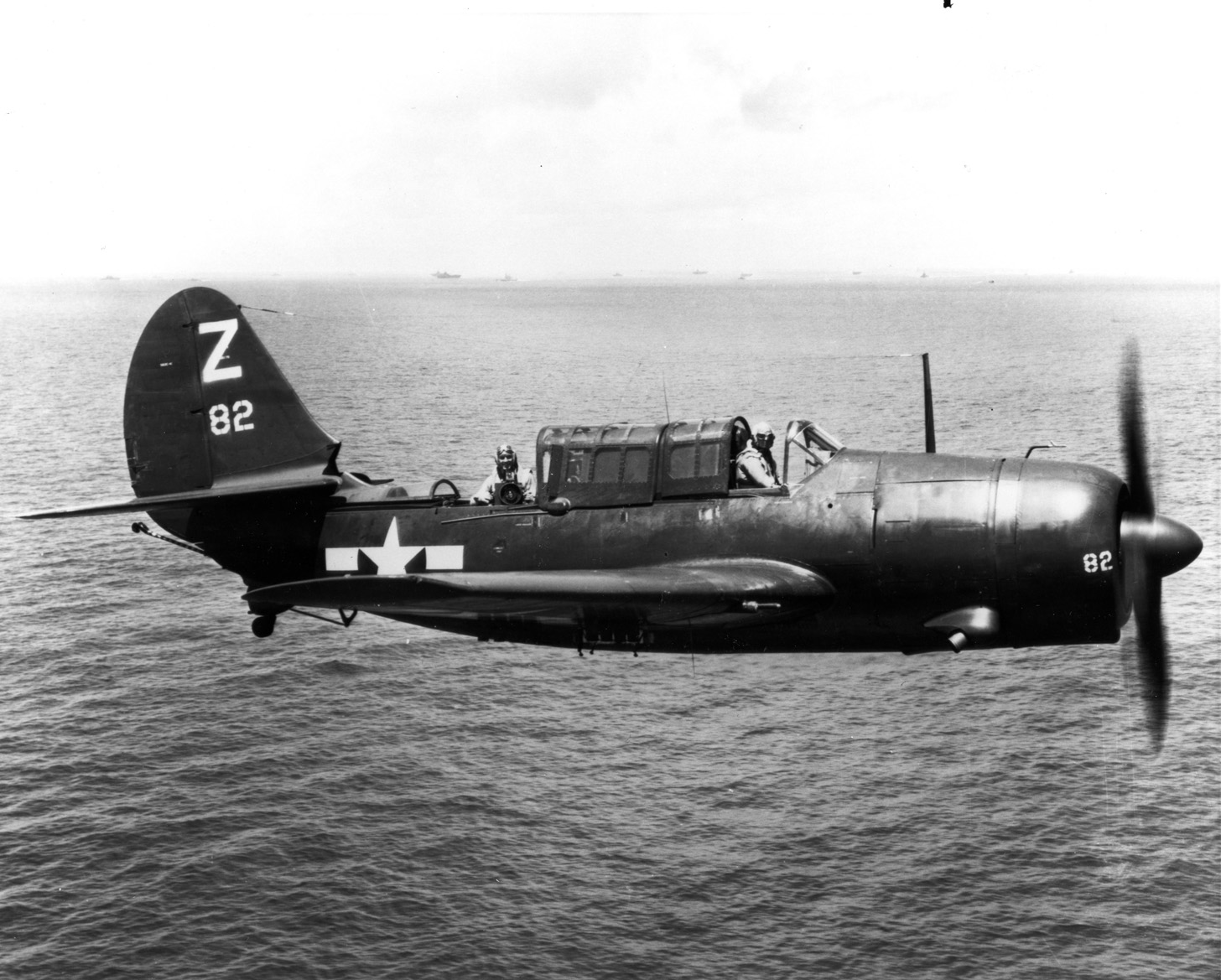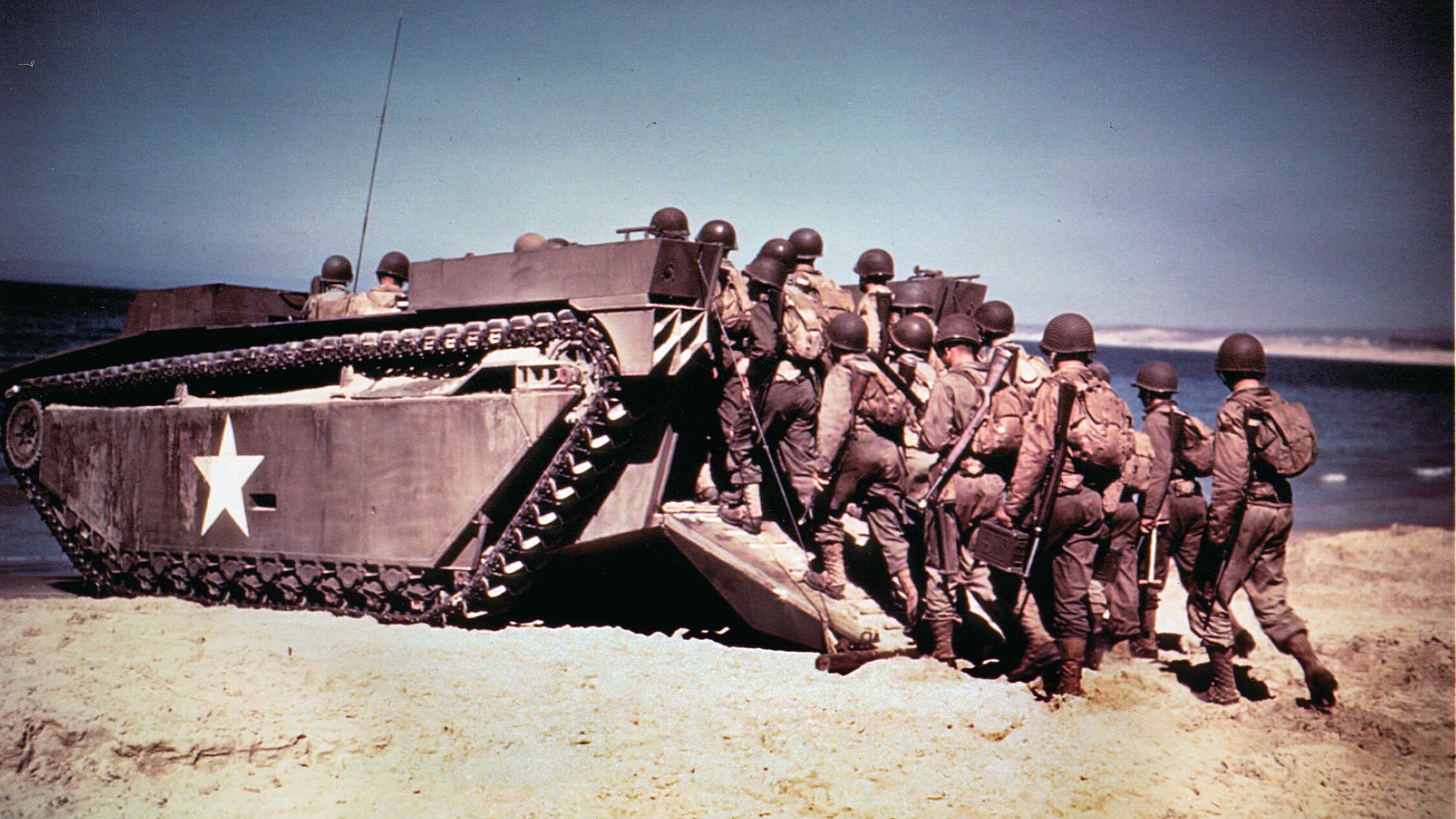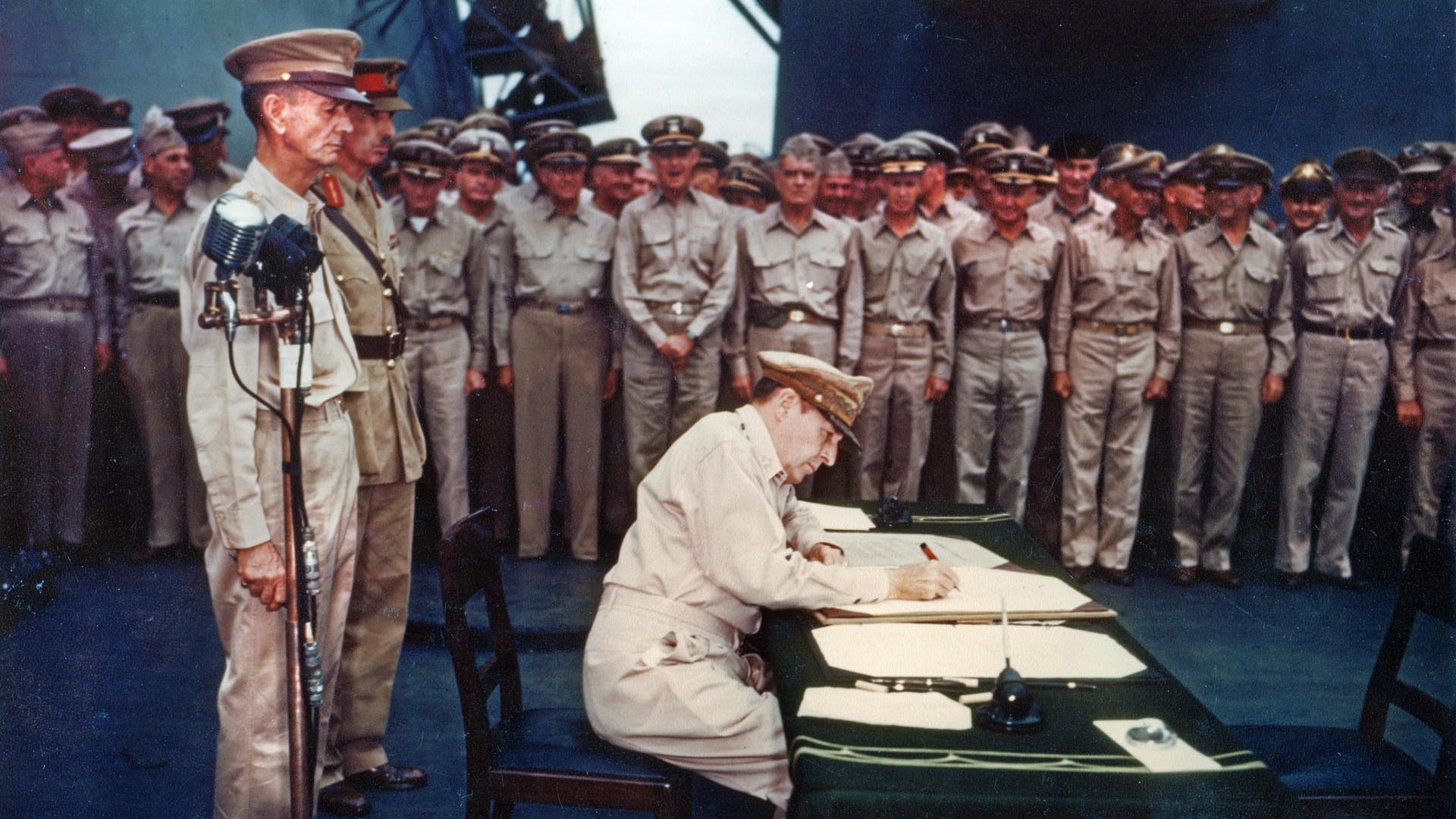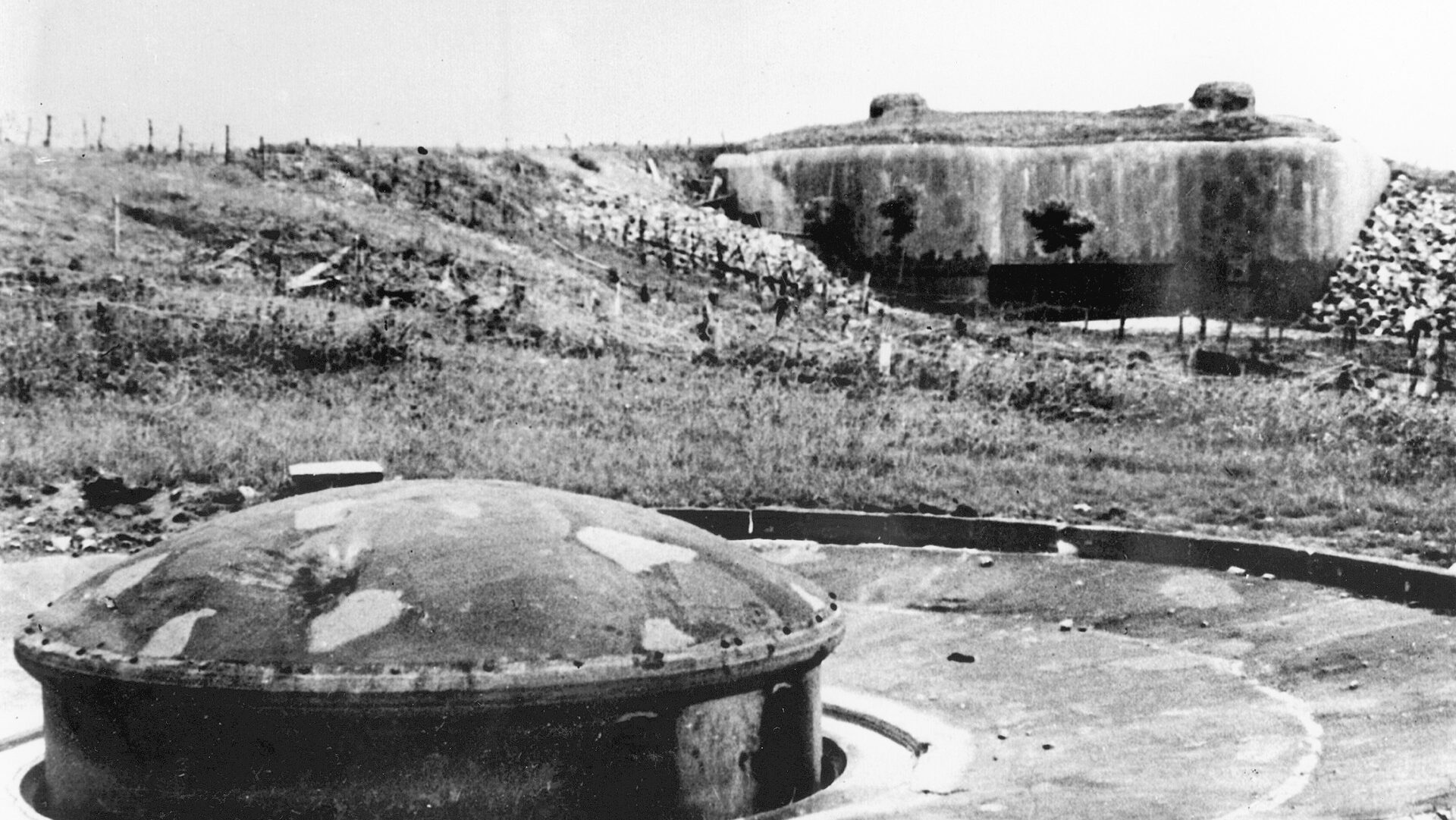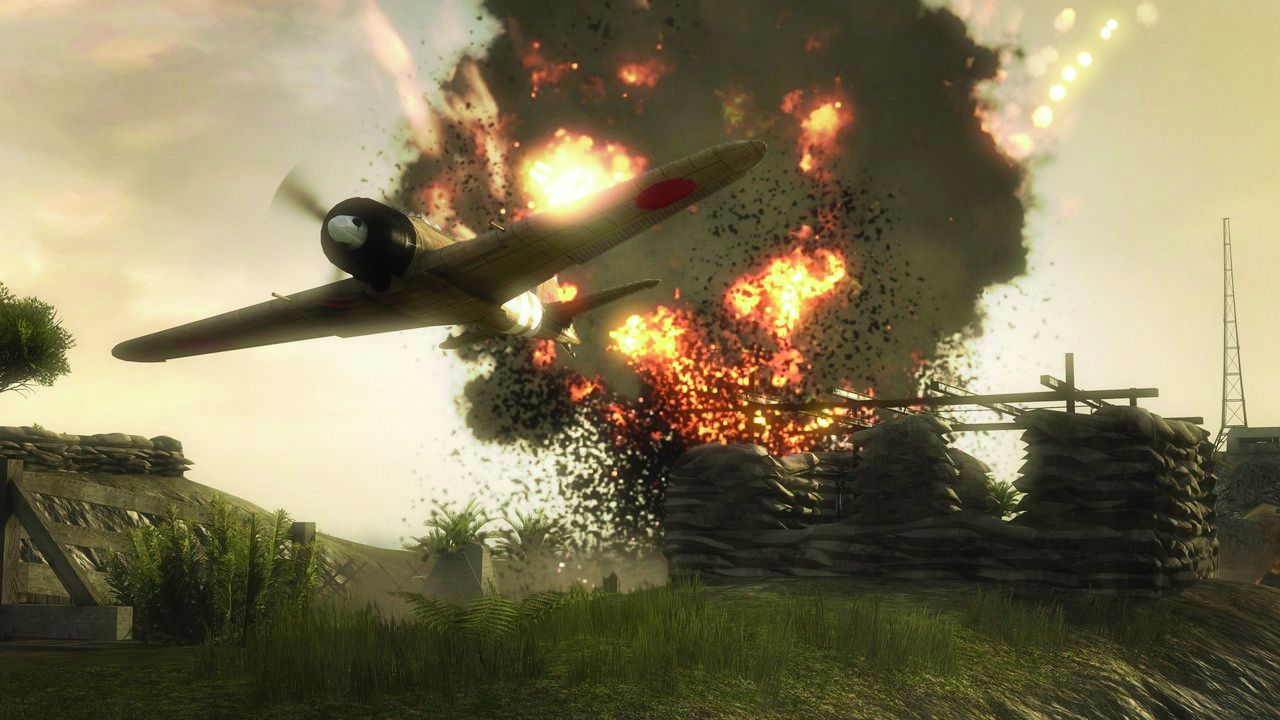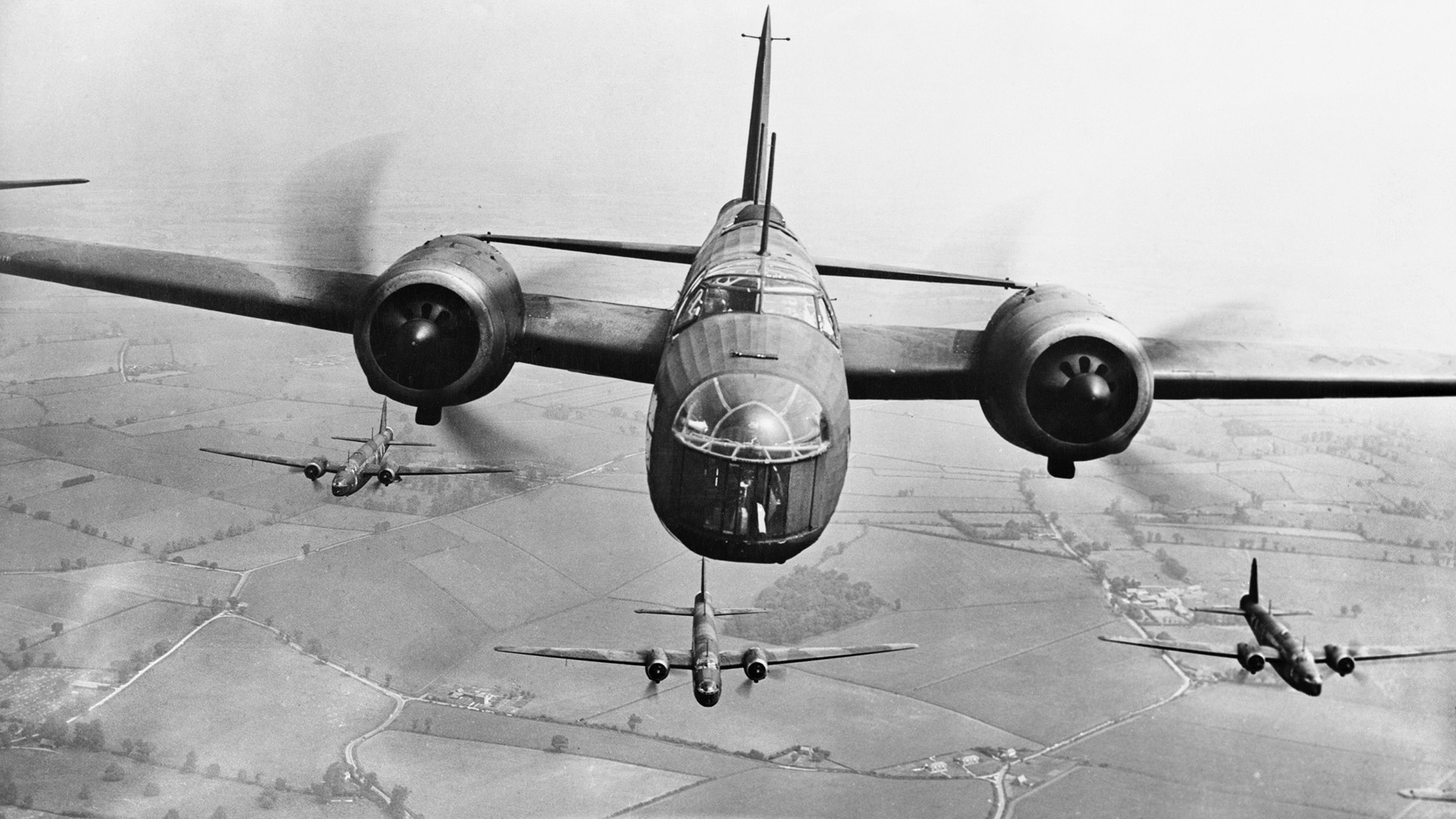By Gene Eric Salecker
By April 1944, American and Australian troops were moving westward along the northern edge of New Guinea, reclaiming territory taken by the Japanese in early 1942. After hard-fought battles to capture Gona, Buna, and Sanananda in eastern Papua New Guinea, in late 1942 and early 1943, General Douglas MacArthur, commander of the Southwest Pacific Area, had captured Salamaua, Lae, and Finschhaven in northeast New Guinea. Next, MacArthur captured the Japanese supply base at Saidor, 52 miles east of the enemy stronghold of Madang. Either unable or unwilling to commit their troops to a battle in the Madang area, the retreating Japanese withdrew farther west. While the Australians advanced against Madang, MacArthur set his sights on the coastal villages of Wewak and Aitape in northeastern New Guinea and Hollandia near the border in Dutch New Guinea.
By this time the Allies controlled the air and the seas around New Guinea. Although there were still about 60,000 Japanese soldiers on New Guinea, they were short of supplies, and morale was dangerously low. On the other hand, the Allies had continued to grow more powerful. By the beginning of 1944, MacArthur had five American divisions, three regimental combat teams, and three engineer special brigades, along with five Australian divisions, at his disposal. Also, his Fifth Air Force had about 1,000 combat aircraft and his Seventh Fleet had a large array of warships, cargo vessels, transports, and landing craft.
Instead of attacking Wewak, where the Japanese were concentrating and expecting this to be his next landing site, MacArthur proposed to jump his army 275 miles up the coast to capture the village of Aitape, site of three Japanese airfields. At the same time he would push two divisions of Lt. Gen. Robert L. Eichelberger’s I Corps 125 miles farther west to capture the major Japanese air and supply base at Hollandia. By deciphering captured Japanese codebooks, the Allies knew that the Hollandia area, with its three airfields, was lightly defended. MacArthur was going to bypass Wewak and land behind the Japanese, trapping the Imperial soldiers between the Australian troops that continued to push westward overland and the recently landed American troops.
Two landing zones were selected in the Hollandia area. One would be at Tanahmerah Bay on the west side of an outcropping of land formed by the Cyclops Mountains. Thought to be a lightly defended area, the 24th Infantry Division, a regular Army unit commanded by Maj. Gen. Frederick A. Irving, would storm ashore at two separate beaches, Red Beaches 1 and 2, and then drive inland on a well-established old Dutch road toward the airfields, which had been constructed on a strip of land sitting between the southern edge of the Cyclops Mountains and a large meandering body of water known as Lake Sentai.
Simultaneously, a landing was to be made at Humboldt Bay on the eastern side of the Cyclops Mountains outcropping. The 41st Infantry Division, National Guard troops commanded by Maj. Gen. Horace H. Fuller, would land at White Beaches 1 through 4. Thought to be more heavily defended, the strongest force would land on White Beaches 1 and 2 on a narrow strip of land about 21/2miles south of Hollandia town. Each beach was only about 700 yards long and 100 yards deep with a mangrove swamp directly behind. Another landing area, White Beach 3, was no better, situated on the tip of a finger of a peninsula separating large Humboldt Bay from small, hidden Jautefa Bay. On the northwestern shore of Jautefa Bay sat the small native village of Pim, which had a jetty and the start of a road leading to the eastern side of Lake Sentai. While most of the attackers would come ashore at White Beaches 1 and 2, a battalion of soldiers in LVT amphibious tractors and DUKW amphibious trucks would land at White Beach 3, rumble across the finger-like peninsula, splash into Jautefa Bay, and make a final landing near Pim at White Beach 4.
Throughout the month of March and into mid-April, MacArthur kept up the illusion that his next objective was Wewak, launching several aerial bombing runs and even a few naval bombardments. At the same time, Lt. Gen. George C. Kenney’s Fifth Air Force struck at the Hollandia airfields, wiping out almost all of the 350 defending Japanese planes. On April 20, the three invasion convoys, headed for Aitape, Tanahmerah Bay, and Humboldt Bay, rendezvoused near Manus Island. On the 21st, the ships bearing the invasion force for Aitape, code named Persecution Task Force, broke off and headed southeast toward their landing beaches. The rest of the ships, containing the invaders for Hollandia, code named Reckless Task Force, continued on. At 1:30 am on April 22, D-day, the remaining convoys split. The Central Attack Group carrying the 41st Division headed toward Humboldt Bay, while the Western Attack Group, with the 24th Division, went toward Tanahmerah Bay.
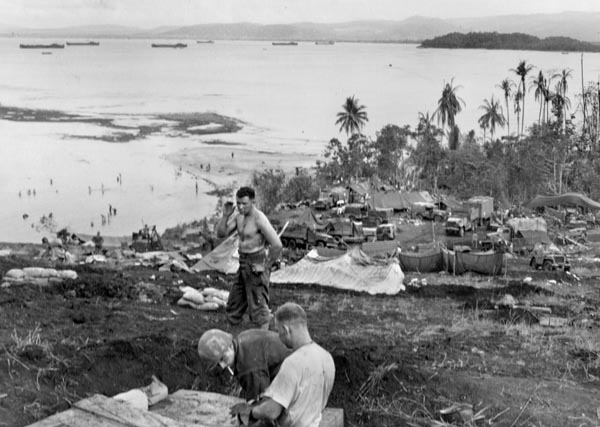
At first light on April 22, 1944, the two invasion fleets began their preinvasion bombardment while airplanes from a supporting carrier task force made bombing and strafing runs on the area. The Japanese had about 7,600 men in the area, but most were service troops. Only about one out of every 10 Japanese soldiers carried a rifle. Caught completely by surprise, most of the enemy soldiers fled into the jungle. Surprisingly, when the first American troops from the 24th Division stormed ashore at Red Beaches 1 and 2 they were greeted by only a few scattered rifle shots. Enemy opposition was almost nonexistent.
As the following waves quickly raced ashore, the first wave searched for the old Dutch road that was to lead them off the beaches and toward the Lake Sentai airfields. As troops and supplies started to pile up on the two beaches, the men discovered that there was no “old Dutch road.” Wrote naval historian Admiral Samuel Eliot Morison, “There simply was no way to get men or vehicles off this beach except by the way they had come; they might as well have landed at the base of an unscalable cliff.”
At Humboldt Bay, the preinvasion bombardment hit a Japanese ammunition dump. Captain Bern Anderson, the landing control officer, reported, “A fire in an enemy dump on the right side of Beach White One was plainly visible and was picked up well out to sea.” Two companies of infantry hit White Beach 1 two minutes behind schedule, followed by a reinforced rifle platoon landing at White Beach 2. On the southern finger of land, at White Beach 3, a rifle company came ashore and secured the southern entrance into Jautefa Bay. Noted Captain Anderson, “The beach frontage [at White Beach 1] … was filled with large quantities of Japanese supplies of all kinds, including large dumps of rations, ammunition, and aerial bombs.” A 41st Division infantryman added, “We discovered the largest Japanese ammunition dump that I have ever seen. It covered the beach for about a mile and must have been 200 [sic] feet deep.” Like the landings at Tanahmerah Bay, the landings at Humboldt Bay were unopposed.
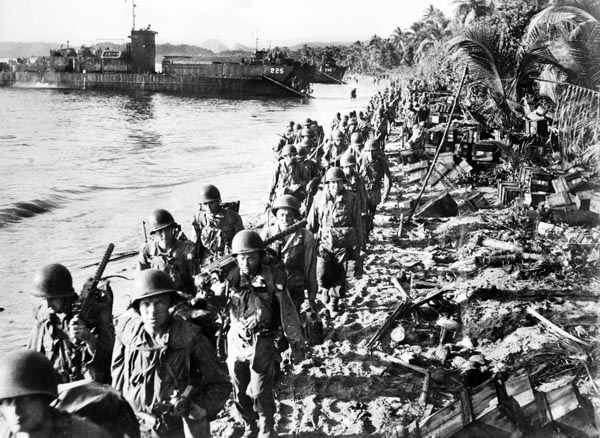
As the fire in the Japanese supply dump continued to burn, the 41st Division troops moved north toward Hollandia town and west toward Lake Sentai and the airfields. Simultaneously, the 24th Division soldiers were inching their way eastward along a series of small trails, none of them large enough to move supplies. Since the 41st Division was having an easier time, 24th Division commander General Irving made the decision to have his followup supplies sent to Humboldt Bay on D+1. White Beaches 1 and 2 would now be the supply points for both advancing divisions.
Pushing their way off the crowded White Beaches, the 41st Division soldiers captured Pancake Hill, a slight promontory just north of the beach peninsula, and pushed on toward Hollandia. By nightfall they were near the town. And still there was no heavy opposition from the Japanese.
At White Beach 1, the 116th Engineer Battalion came ashore and tried to build an exit road off the beach. When the sand proved to be too soft for wheeled construction equipment and the swampy land behind the beaches limited the site of such a road, most of the engineers turned to helping unload seven large Landing Ship, Tanks (LSTs) that were bringing in all kinds of supplies. The big ships, easy targets for Japanese night aircraft, needed to be unloaded and out of the area as soon as possible. With no exit road in existence yet, the supplies began to pile up, literally. Large stacks of food, ammunition, gasoline, and other essentials began to grow sky high along White Beaches 1 and 2.
Early on the morning of April 23, D+1, the 41st Division soldiers began their move against Hollandia. By 11:15, the town was in American hands. Below the Cyclops Mountains, advancing troops from both the 24th and 41st Divisions began to run into some Japanese resistance as they forced their way over the narrow native trails toward Lake Sentai and the three enemy airfields. By nightfall, the two divisions were still miles from their objectives.
Back on the beaches, there was still mass confusion. “On D plus one,” wrote military historian Robert Ross Smith, “more troops, vehicles, and supplies began pouring onto White Beaches 1 and 2. Only slow progress could be made on exit roads, and beach congestion increased.” The 532nd Engineer Boat and Shore Regiment, along with two companies of infantrymen, brought ashore more than “4,200 tons of ammunition, drummed fuel, rations and other supplies,” including more than 300 vehicles. All of this was piled on the two beaches beside the burning Japanese supply dumps. In the late afternoon the situation was alleviated somewhat when the 532nd Engineers used their LVCPs (Landing Craft, Vehicle, Personnel) to ferry about 500 tons of supplies directly from some LSTs to the jetty at Pim in Jautefa Bay.
Shortly after dusk on D+1, around 8:45 pm, a lone Japanese plane, flying “too low above the beach for radar detection,” skirted past the Cyclops Mountains and, perhaps guided by the flames from the still burning Japanese supply dump, dropped three bombs on White Beach 1. While two bombs exploded harmlessly in the soft sand, the last landed directly on an enemy ammunition pile at the base of Pancake Hill. Captain Eugene Pfile, 92nd Evacuation Hospital, was in a foxhole on Pancake Hill. He recalled, “What a night to remember! We were in our foxholes…. Just at dusk a lone raider came along the beach below us. There was no radar and no search lights. By a lucky hit, he dropped 3 bombs on the Jap ammunition dump [probably guided by the fire on the beach from the dumps burning from the previous shelling.] Explosions were more or less continuous—some tremendous enough to shake the earth where we were on a hill about a mile [4 seconds by sound] away.”
Almost immediately, the fire spread to an American gasoline dump, causing tremendous explosions that sent fire and debris out in all directions and started fires among the stacked American supplies. Sleeping near the holocaust, out of 30 men and one officer of the 287th Ordnance Medium Maintenance Company, 18 men and the one officer were wounded while seven men were missing. After evacuating the wounded, the rest of the company began rolling gasoline drums into the bay, while two technical sergeants manned bulldozers and tried to rescue antiaircraft guns and other vital equipment from the path of the fire.
Farther along the beach, the men of the 532nd Engineers began work on a firebreak. “Gasoline drums were rolled to the right and left to cut a thirty-yard open strip from the beach through the area,” penned the engineer historian. “Bulldozer operators were on the spot pushing barrels and supplies into the water. Human supply chains were organized and the supplies passed from one man to another until they reached the safety zone. Roller conveyors were hastily set up. Every man worked frantically to save everything he possibly could.” Likewise, men from the 116th Engineer Combat Battalion, including three bulldozer drivers, worked feverishly to make a firebreak. “They dared to work over unexploded shells only 75 yards from the flames. They pushed between the blazes and slots containing high octane gasoline—and with a 20-ton dump of TNT at their backs 100 yards away.”
The Collecting Platoon of Company B, 262nd Medical Battalion had set up an aid station in the center of the dump area for easy access from any part of the beachhead. Immediately upon the eruption of the Japanese ammunition dump, the two officers and 44 men “worked feverishly” to collect and aid the victims of the blast and continuing fires. “The litter bearers moved continuously through the holocaust of burning dumps and tremendous explosions. Again and again they returned to the inferno to rescue their comrades while the remainder of the personnel stayed in the aid station to treat the wounded.” For their heroic efforts in aiding the many wounded and braving the flying shrapnel and growing flames, the Collecting Platoon was awarded the Presidential Unit Citation, the highest award that can be attained by any military organization.
Helping to evacuate the wounded were members of the 41st Division Military Police Platoon. “Most of us MPs with the other troops ran towards White Beaches 1 and 2, usually barefoot and unclothed from our bivouac,” recalled one MP. Two MPs were cut off by the rapidly growing fire and had to “creep 1500 yards up the beach and inland through fire, burning oil, exploding gas and ammo.” Upon reaching safety, one man discovered that he was wounded in the left arm, left shoulder, and left thigh. When he removed his fatigue jacket, “most of it fell off in burnt pieces. His back was a mass of blisters, blood, and sweat.”
“At first, we seemed to confine the fire by this fire-lane,” wrote the historian for the 41st Division. “Then flames hit another ammo dump. When it exploded, bullets and metal fragments sprayed the beach…. The fire leaped our 30-yard break and flamed new heaps of supplies. Flames raced from dump to dump. Again and again, explosions showered the beach with murderous missiles.” A 2nd Engineer Special Brigade historian added, “The work put into the construction of the fire break was in vain for the flames jumped across it as if it was not even there.”
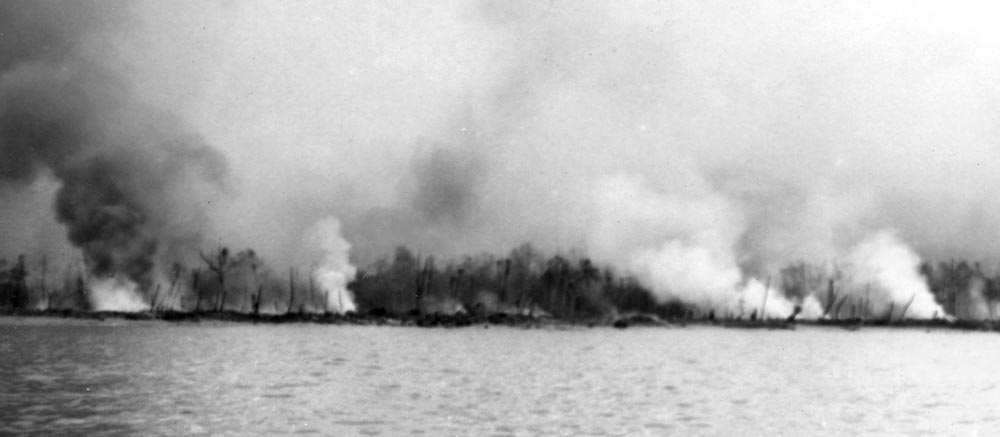
“Now it was apparent that the lack of dispersal areas on White Beach 1 and the rush to unload the ships, which in turn had dictated the establishment of gasoline dumps, supply dumps, and ammunition dumps close to one another, and even adjoining one another, would inevitably result in great losses to the Allies,” wrote chief engineer Maj. Gen. Hugh J. Casey. As the fire continued to burn and spread, acts of heroism became commonplace on White Beach 1.
As the flames jumped the firebreak, 1st Lt. Wortham W. Dibble, Company B, 41st Engineer Brigade, remembered that a wounded man was in a dugout on the beach, close to the dump area. Organizing a rescue party, Dibble led the men through the flames and exploding shells and returned with the wounded man. Another officer, 2nd Lt. Robert F. Dalton, Headquarters Company, helped pull six wounded men from “the middle of the firebreak with gasoline fires raging not more than twenty-five feet on either side of them.” Once these men were safe, Lieutenant Dalton ran back into the holocaust to rescue another wounded man. Noted a 41st Division historian, “That act of heroism undoubtedly saved the man’s life for the next morning that foxhole was filled with debris and blackened dirt.”
During the night, four enlisted men of Company B, 532nd Engineers, offshore in an LCVP, saw the signal of a blinker light through the darkness and smoke signaling that there were men trapped on the beach. “As we closed in, a heavier explosion rained fragments into the sea around us, but we charged on in,” one of the rescuers recalled. “We grounded, helped men aboard, and shoved off. Explosions shook the beach and wounded two of the men we were saving. We carried our casualties down-shore south across Jautefa Bay Channel to White Beach 3 and returned to save more men.”
Even a war correspondent became a hero. Bedded down on the beach before the bombing, a number of war correspondents dove for cover when the first explosion erupted. As the others ran for safety, 1st Lt. John L. Cross of the New Rochelle, New York, Standard-Star, picked up a wounded man and started toward an aid station. Explosions hurled him to the ground eight times, but Cross never let go of the wounded man. Once at the aid station, Cross could not find a doctor, so he treated the man himself. While doing this, other wounded men were brought in. Assuming that Cross was the doctor, the wounded men were left in his care. Rising to the occasion, the correspondent applied sulpha powder and bandaged the wounds and burns.
Out at sea, crewmen on various naval ships could see the tremendous explosions and spreading flames and wondered at the cause. As the sun came up, they could finally make out what was going on. An observer on one of the LSTs, Major Elmer P. Volgenau, wrote, “The holocaust on White Beach as viewed from the sea was so awesome and terrifying as almost to defy description. Great billowing black clouds of smoke were flung thousands of feet into the air from exploding drums of gasoline, while the oil, lubricants, rations, vehicles, and hundreds of tons of miscellaneous stores and gear burned below it in a solid, hideous, frightening wall of flame five hundred feet in the air for a mile and a half along the beach.”
“All this made 24 April a hectic day in Humboldt Bay,” wrote Samuel Eliot Morison in a vast understatement. “Five LSTs arrived on schedule with men, supplies and equipment; two APAs [fast-speed transports] and seven LSTs diverted from Tanahmerah Bay … also arrived. And all twelve LSTs were scheduled to leave the same day in order to pick up more loads.” As the LSTs diverted from the 24th Division beachheads neared Humboldt Bay, they recorded what was seen on the beach. The commander of LST 227 found “large fires and great explosions … centered in munitions and provisions dumps on White Beach #1.” Wrote the captain of LST 269, “The continuous shower of shrapnel and burning debris made it inadvisable to approach this beach.”
With the coming of daylight, Captain Anderson, the landing control officer, tried unsuccessfully to get a YMS (Auxiliary Motor Minesweeper) in close enough to shore to use a firehose on the conflagration. Next, Anderson sent a “canvass of vessels” toward the beach to attempt to use their handy billy gasoline-powered pumps to spray water on White Beach 1, but it was discovered that they “had insufficient hose to reach from the beach to the fire.” As Captain Anderson concluded, “Consequently, no suitable fire-fighting equipment was available.”
Throughout the rest of April 24, D+2, the engineers, collecting platoon, and others did what they could to save people and supplies from the immense fire. A 41st Division historian wrote, “The following morning relief parties were formed but the intense heat drove back all efforts to salvage supplies. Additional medical men were called to the area to administer first aid and much effort was made to quarter and feed the many transients who were cut off from their units during the fiery night.” Collecting Platoon of Company B set up its aid station as close to the fires as possible and continued to bring in wounded and burned men. “Despite falling metal fragments,” a division historian recorded, “litter men moved through the blazing, smoking dumps on rescue missions. Aid men worked under the same menace to save wounded whom the bearers brought in. Several times, they had to move the station itself away from the flames.”
Eventually, after every living soul had been evacuated, firefighting efforts on White Beach 1 had to be abandoned. It was just too dangerous. Noted Major Volgenau, “Shortly after the 2d Engineer Special Brigade working and rescuing parties evacuated the beach due to the tremendous heat and danger of exploding projectiles of all kinds, the raging fire reached its maximum intensity in an intensity of destruction that made everyone gasp. None who saw it will ever forget the White Beach fire at Hollandia set off by one unlucky Jap bomb.”
While the fires and explosions continued, the men went to work to try to unload the 12 LSTs waiting offshore. In trying to utilize White Beach 2, most of the big ships grounded too far out in the bay. Only one vessel was successfully unloaded on April 24. The next day, D+3, at high tide, the remaining 11 ships sped toward the beach. Although they grounded in three or four feet of water, herculean efforts were undertaken, and by nightfall all but two of the ships had been successfully unloaded. To avoid the congestion of supplies on White Beach 2 that had piled up on White Beach 1, most of the supplies and ammunition was carted by LVTs across Jautefa Bay to White Beach 4.
“The fires and explosions continued until D plus 4 day,” reported Captain Anderson. “These fires destroyed practically all the bulk supplies that had been landed on D and D plus 1 days, consisting mainly of rations and ammunition; a number of vehicles still in the area; and all of the Japanese material within the limits of the fires. By D plus 5 day [April 27] the fires had burned out sufficiently for work to be started on clearing the area for further use by LSTs.” Almost all of the supplies brought ashore on D-day and D+1 had gone up in flames, almost 60 percent of the rations and ammunition allotted to the 41st Division for the entire Hollandia campaign. General Eichelberger immediately radioed a request for “duplication of all bulk stores which had been unloaded from LSTs at Humboldt Bay on D-Day and D plus 1.” Knowing that the new supplies could not possibly reach Hollandia for at least a week, Eichelberger also issued orders to cut rations and limit combat operations. Remembered 41st infantryman Francis Catanzaro, “Until further notice, we were told, we would be on one-third rations: one box of K-rations per day.”
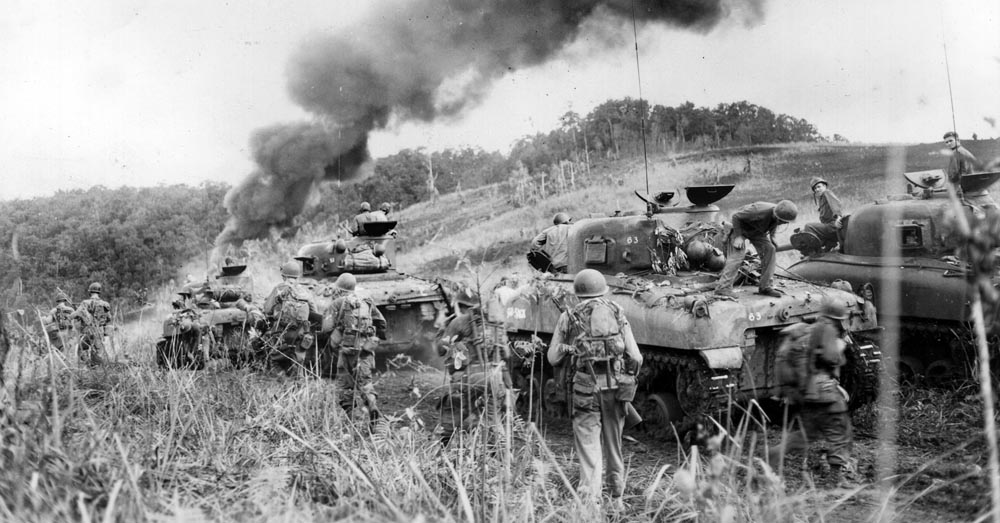
Catanzaro went on, “Because of the food shortage, all patrols were ordered to look for Japanese rations in and around all buildings. The worst of the ration emergency lasted about one week. During that time, we were able to find a few bags of rice and some canned salmon that helped get us through the crisis.” Worse than the lack of rations for most men was the loss of cigarettes. “With the exception of a few Japanese cigarettes we found in buildings, K-rations were the only source of cigarettes.” However, there were only four cigarettes in each K-ration box. “Most of the smokers really suffered when their supply of cigarettes ran out,” Catanzaro, a nonsmoker, recalled. He added, “I learned what a strong addiction tobacco could be.”
The 41st Division had lost the equivalent of 11 LST loads of equipment in the Hollandia fire, estimated at about $8 million in 1944 dollars. Twenty-four men had been killed, and another 100 had been wounded. The casualty figures could have been a lot higher if not for the heroic actions of so many officers and men. In the 532nd Engineer Boat and Shore Regiment alone, six officers were awarded the Silver Star, and three officers and 23 enlisted men received the Bronze Star for their heroic actions in the Hollandia holocaust.
Fortunately, the firestorm on the beach had not impeded the movement of the troops in the field. On April 25 and 26, infantry units were carried across Lake Sentai in LVTs and deposited on the shores below the three airfields. Facing only sporadic enemy gunfire, the three objective airfields were captured on the 26th. Over the next few days, patrols spread out in all directions, but a major clash never came. Within days of their capture, the three Hollandia airfields were being used by General Kenney’s Fifth Air Force planes.
At Aitape, one regiment of the 41st Infantry Division and one from the 32nd Division had stormed ashore on the same day as the Hollandia operation, April 22. Finding no Japanese resistance, the three enemy airfields were in American hands by nightfall. Australian engineers had one of the airstrips operational within two days, and an Australian fighter squadron moved in to help push the retreating Japanese farther westward into the interior of New Guinea.
In spite of the horrific fire that left more than a mile of beachfront blackened with mounds of smoldering debris and burned vehicles sitting with melted tires, MacArthur’s leap behind enemy lines had been a success. With the loss of fewer than 200 killed and about 1,200 wounded at both Hollandia and Aitape, MacArthur had dealt the Japanese on New Guinea a major blow. In the long run, the Hollandia area proved to be an excellent deep water harbor, and the airfields were improved to handle hundreds of Allied planes. The improved airfields and excellent harbor were used in future operations along the coast of New Guinea and even for operations into the Philippines.
Although labeled a success, the Army logistics section (G-4) knew that mistakes had been made. “[The Hollandia operation] was a logistical nightmare due primarily to the fact that too much was thrown too soon into too small an area,” G-4 admitted. “Many more vehicles, pieces of heavy equipment, and supplies were landed on the first three days than could be cleared from the beaches.”
Captain Anderson, the landing control officer, noted in his report, “Due to construction schedules laid down in advance of the landing, a large number of engineering personnel and a large amount of engineering equipment were landed on D-day and D plus 1 day.” He added, “Unloading this equipment during the earliest phases of the landing interfered with getting combat equipment clear of the beach, added materially to the congestion on the beach, and contributed in this case to the losses suffered from fires. It is strongly recommended that no elements be included in D-day echelon which are not intended to be used directly for the essential purpose of capturing the objective area.”
By April 1944, with the experience of so many previous successful landings behind them, the Allied planners should have known better. It was a costly, deadly price to pay for one Japanese bomb.
Author Gene Eric Salecker is a retired teacher. His latest book, published in 2014, is The Second Pearl Harbor: The West Loch Disaster, May 21, 1944.
